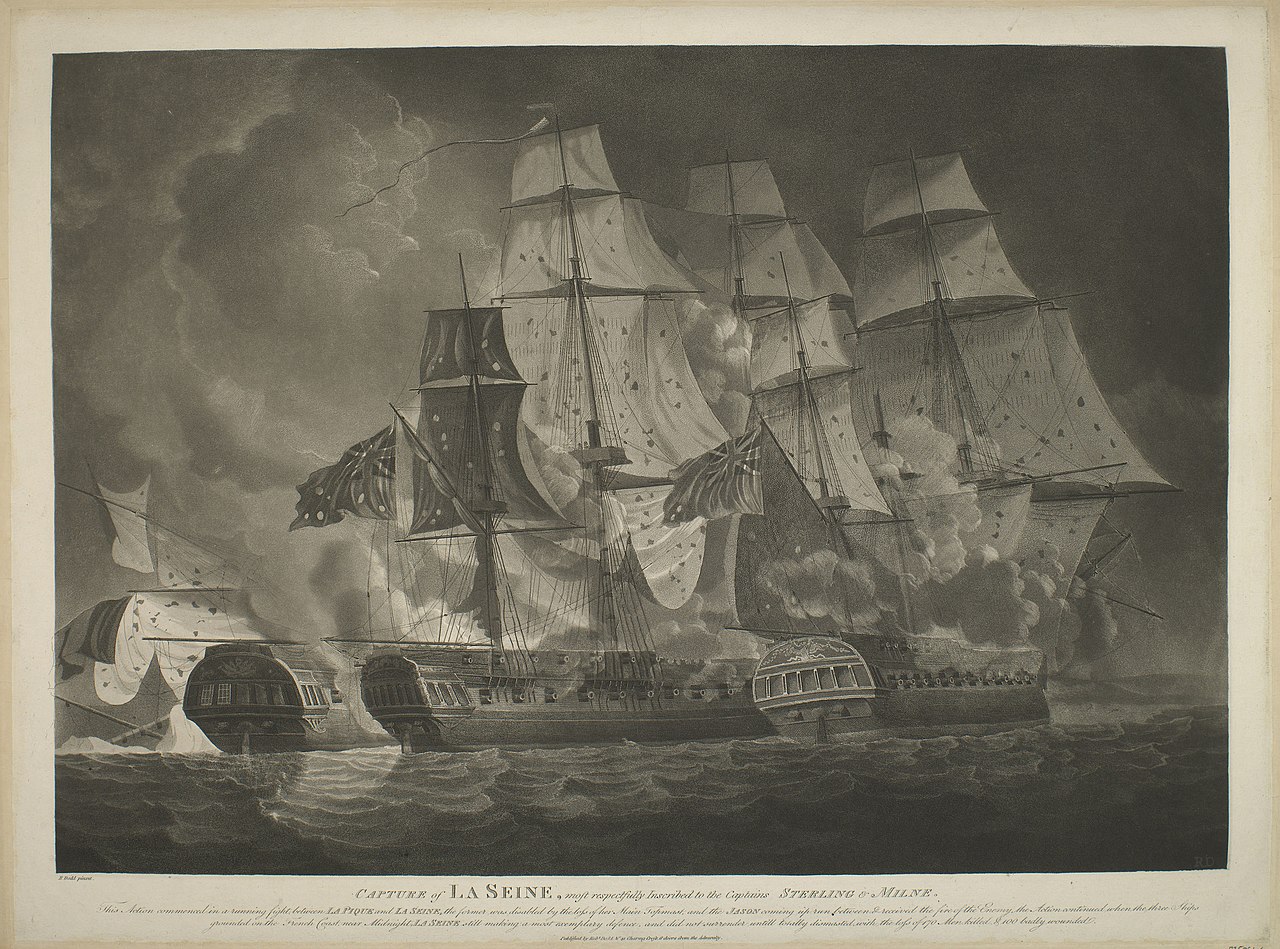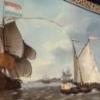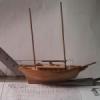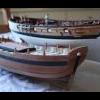HOLIDAY DONATION DRIVE - SUPPORT MSW - DO YOUR PART TO KEEP THIS GREAT FORUM GOING! (Only 75 donations so far out of 49,000 members - C'mon guys!)
×
-
Posts
2,249 -
Joined
-
Last visited
Reputation Activity
-
 Beef Wellington reacted to SJSoane in HMS Bellona 1760 by SJSoane - Scale 1:64 - English 74-gun - as designed
Beef Wellington reacted to SJSoane in HMS Bellona 1760 by SJSoane - Scale 1:64 - English 74-gun - as designed
Hi Gaetan, I am coming to the same conclusion, that the rules were something to aim towards, but not something that could be followed without adjustment. There are too many conflicting rules: 1) a beam under every port; 2) no excessive curved, compass timber in knees; 3) knees relative to fore or aft side of a beam different fore and aft of midships. Not all rules could be followed in every location. So it is up to the experience and judgement of the shipwright to find the best compromise among all of the rules.
Thank you, stuglo, for your kind comment.
Gary, I posted something on your postings about this. Also, I will look at whether I can get a hanging knee near the sheave for the tiller. And regards the tiller sweep, I am relying on Goodwin's Construction and Fitting book that the sweeps did not come into use until a few decades after the Bellona (1760), so I am having to do sheaves on the sides and ropes straight from the tiller to the sheave, and back to the sheave taking it up to the quarterdeck. I understand the tiller ropes go slack at some point in this older system, which eventually I will find out when I built it.
And, here is the starboard quickwork completed, and a template starting for the first standard. Once the red goes all the way up through all three decks, it is going to look like a red velvet liner inside a jewelry box!
Mark
-
 Beef Wellington reacted to garyshipwright in HMS Bellona 1760 by SJSoane - Scale 1:64 - English 74-gun - as designed
Beef Wellington reacted to garyshipwright in HMS Bellona 1760 by SJSoane - Scale 1:64 - English 74-gun - as designed
Your welcome Mark. You could put a hanging knee on the aft side which would ensure one hanging and one lodging knee. From looking at your drawing your sheave at the side is clear of the aft side of the beam so I am not sure why you just don't put the hanging knee there. As you can see on mine I also had a standard to deal with. Another item comes to mind is your sheave in the side or attached to the underside of the tiller sweep? Gary
-
 Beef Wellington reacted to garyshipwright in HMS Bellona 1760 by SJSoane - Scale 1:64 - English 74-gun - as designed
Beef Wellington reacted to garyshipwright in HMS Bellona 1760 by SJSoane - Scale 1:64 - English 74-gun - as designed
Mark how come you just don't put in two lodging knees between 15 and 16? Here is a couple of photo's of Hector which may help. Good ideal of putting in a dagger knee, looks good. I do believe that having a hanging /lodging knee on the ends of the beam was probably the most important. Mark if you look at the second beam forward and its arm your noticed that between the arm and beam it has two hanging knees and a double set of lodging knee between beam 2 and 3 and has a missing lodging knee on the front of the arm. Wouldn't you have as much stress here from the fore mast as you would at the main mast? Sleep tight.
-
 Beef Wellington reacted to SJSoane in HMS Bellona 1760 by SJSoane - Scale 1:64 - English 74-gun - as designed
Beef Wellington reacted to SJSoane in HMS Bellona 1760 by SJSoane - Scale 1:64 - English 74-gun - as designed
Enough drawing; here are the first images of the quickwork being installed. The red is looking very dramatic.
Also note the thickness of the hull at the gunports. That was some substantial work.
The quickwork became quicker when I took a clue from Greg Herbert and David Antscherl, making up card patterns from multiple pieces. I taped a piece to the top of the spirketting that was not the full height of the quickwork; and then another piece under the clamp above, taped to the lower piece. When I pulled this off, I had the exact shape and width of the quickwork needed. I traced onto the wood, and bob's your uncle. The biggest challenge was keeping the notes clear on each piece as to which way is forward, and which edges are concave or convex.
I also set up a little drilling jig for the eyebolts. Since the quickwork pieces were not uniformly the same width and had different angles cut on the ends, I set the fence of the drill the desired distance up from the lower edge, and a stop that was pointed at the exact height above the lower edge needed for the hole. That way, different pieces were always registered at the right distance up and out from the lower edge of the port.
And finally, scoring and staining
Mark
-
 Beef Wellington got a reaction from chris watton in HMS Snake by Beef Wellington - FINISHED - Caldercraft - Scale 1: 64 - First wooden ship build
Beef Wellington got a reaction from chris watton in HMS Snake by Beef Wellington - FINISHED - Caldercraft - Scale 1: 64 - First wooden ship build
About time I caught up with myself...
@Ben - I'm going to have to stand guilty as charged! Appreciate your post, this was something that I have been wrestling with for some time and fully recognize that the approach taken is a compromise. My thinking has been as follows, and I suspect that every model builder will arrive at a different place. Your coils are certainly excellently executed!
Quality of rope used: Having used the Syren line on 'Jason', there is just no comparison between good quality custom rope and the 'stuff' supplied in kits. My skill levels are just not up to achieving consistent coils following a seamanlike practice (that look anywhere near acceptable). Scale: This seems to be a variable from modeler to modeler, but to my eye many of the coils using this technique just do not look right at scale, especially when many pins are used on a rail adjacent to each other. Much of the rope used per kit instructions are much thinner than your prototype - mostly kit supplied 0.25mm line which is not very substantial and subject to gravity making floating 'ovals' distracting Quantity of rope (on the actual ships): Looking at many older photographs of ships, the one thing that stands out to me is that the quantity of belayed rope used on contemporary working vessels just looks far more voluminous for whatever reason than that seen on modern 'museum' ships, maybe because of longer working lengths, necessity to be worked by many hands etc etc. The bottom line though is that there is enough on this build that continues to bother me (both mistakes and things that I have since learned) to push me to continue with an eye to completion. I'll apply for parole at the duly appointed time...
Rigging (almost) complete:
After nearly 7 years, with all the main rigging elements in place, I can start to smell the scent of completion. The only outstanding rigging feature (in addition to some remaining decorative coils) are the spritsail sail sheets which will be added when I'm confident that the anchor placement won't cause problems.
Braces:
One of the bigger challenges were the braces, mainly because many of these are bent onto various stays. At this scale the rope doesn't behave well, and preventing the stays being pulled into all sorts of unnatural alignments by the much thinner braces, and keeping the braces taught, meant taking this very slowly, ensuring line had time settle into place and in many cases using dilute PVA while attempting to keep the stays in position. This proved to be especially challenging for the fore and fore topsail braces which bend to the main stay in one rather tight spot.
Sheets, tacks and cluelines:
Petersson was a big help here to illustrate how these worked in practice as the instructions are simplified. Given that both the main and fore require these, with 3 belaying points for each, some planning is needed to ensure sufficient working room as once in position access is even more severely limited. The tack is the most substantial of the running rigging used and 0.75mm rope was used as per instructions. At this thickness, it proved necessary to coil rope on the deck after belaying to pinrails.
I took the same approach to BE on his Pegasus build in having the sheets and tacks go outboard of any standing rigging, although the sheets are yet to be finally secured.
And finally, some overall shots..
-
 Beef Wellington got a reaction from jwvolz in Granado by RMC - FINISHED - Caldercraft - 1:64
Beef Wellington got a reaction from jwvolz in Granado by RMC - FINISHED - Caldercraft - 1:64
Really outstanding progress Bob, very nice. Just a comment on the main tack, I don't think the plans are inconsistent, just maybe not intuitive. I suspect that the tack goes first through a sheave in the chesstree and inboard through a sheave (or simplified hole as per plans) to then be belayed to the range cleat identified. Have been studying this for my own benefit recently 🙂
-
 Beef Wellington got a reaction from p.hoek in HMS Snake by Beef Wellington - FINISHED - Caldercraft - Scale 1: 64 - First wooden ship build
Beef Wellington got a reaction from p.hoek in HMS Snake by Beef Wellington - FINISHED - Caldercraft - Scale 1: 64 - First wooden ship build
About time I caught up with myself...
@Ben - I'm going to have to stand guilty as charged! Appreciate your post, this was something that I have been wrestling with for some time and fully recognize that the approach taken is a compromise. My thinking has been as follows, and I suspect that every model builder will arrive at a different place. Your coils are certainly excellently executed!
Quality of rope used: Having used the Syren line on 'Jason', there is just no comparison between good quality custom rope and the 'stuff' supplied in kits. My skill levels are just not up to achieving consistent coils following a seamanlike practice (that look anywhere near acceptable). Scale: This seems to be a variable from modeler to modeler, but to my eye many of the coils using this technique just do not look right at scale, especially when many pins are used on a rail adjacent to each other. Much of the rope used per kit instructions are much thinner than your prototype - mostly kit supplied 0.25mm line which is not very substantial and subject to gravity making floating 'ovals' distracting Quantity of rope (on the actual ships): Looking at many older photographs of ships, the one thing that stands out to me is that the quantity of belayed rope used on contemporary working vessels just looks far more voluminous for whatever reason than that seen on modern 'museum' ships, maybe because of longer working lengths, necessity to be worked by many hands etc etc. The bottom line though is that there is enough on this build that continues to bother me (both mistakes and things that I have since learned) to push me to continue with an eye to completion. I'll apply for parole at the duly appointed time...
Rigging (almost) complete:
After nearly 7 years, with all the main rigging elements in place, I can start to smell the scent of completion. The only outstanding rigging feature (in addition to some remaining decorative coils) are the spritsail sail sheets which will be added when I'm confident that the anchor placement won't cause problems.
Braces:
One of the bigger challenges were the braces, mainly because many of these are bent onto various stays. At this scale the rope doesn't behave well, and preventing the stays being pulled into all sorts of unnatural alignments by the much thinner braces, and keeping the braces taught, meant taking this very slowly, ensuring line had time settle into place and in many cases using dilute PVA while attempting to keep the stays in position. This proved to be especially challenging for the fore and fore topsail braces which bend to the main stay in one rather tight spot.
Sheets, tacks and cluelines:
Petersson was a big help here to illustrate how these worked in practice as the instructions are simplified. Given that both the main and fore require these, with 3 belaying points for each, some planning is needed to ensure sufficient working room as once in position access is even more severely limited. The tack is the most substantial of the running rigging used and 0.75mm rope was used as per instructions. At this thickness, it proved necessary to coil rope on the deck after belaying to pinrails.
I took the same approach to BE on his Pegasus build in having the sheets and tacks go outboard of any standing rigging, although the sheets are yet to be finally secured.
And finally, some overall shots..
-
 Beef Wellington got a reaction from cog in HMS Snake by Beef Wellington - FINISHED - Caldercraft - Scale 1: 64 - First wooden ship build
Beef Wellington got a reaction from cog in HMS Snake by Beef Wellington - FINISHED - Caldercraft - Scale 1: 64 - First wooden ship build
About time I caught up with myself...
@Ben - I'm going to have to stand guilty as charged! Appreciate your post, this was something that I have been wrestling with for some time and fully recognize that the approach taken is a compromise. My thinking has been as follows, and I suspect that every model builder will arrive at a different place. Your coils are certainly excellently executed!
Quality of rope used: Having used the Syren line on 'Jason', there is just no comparison between good quality custom rope and the 'stuff' supplied in kits. My skill levels are just not up to achieving consistent coils following a seamanlike practice (that look anywhere near acceptable). Scale: This seems to be a variable from modeler to modeler, but to my eye many of the coils using this technique just do not look right at scale, especially when many pins are used on a rail adjacent to each other. Much of the rope used per kit instructions are much thinner than your prototype - mostly kit supplied 0.25mm line which is not very substantial and subject to gravity making floating 'ovals' distracting Quantity of rope (on the actual ships): Looking at many older photographs of ships, the one thing that stands out to me is that the quantity of belayed rope used on contemporary working vessels just looks far more voluminous for whatever reason than that seen on modern 'museum' ships, maybe because of longer working lengths, necessity to be worked by many hands etc etc. The bottom line though is that there is enough on this build that continues to bother me (both mistakes and things that I have since learned) to push me to continue with an eye to completion. I'll apply for parole at the duly appointed time...
Rigging (almost) complete:
After nearly 7 years, with all the main rigging elements in place, I can start to smell the scent of completion. The only outstanding rigging feature (in addition to some remaining decorative coils) are the spritsail sail sheets which will be added when I'm confident that the anchor placement won't cause problems.
Braces:
One of the bigger challenges were the braces, mainly because many of these are bent onto various stays. At this scale the rope doesn't behave well, and preventing the stays being pulled into all sorts of unnatural alignments by the much thinner braces, and keeping the braces taught, meant taking this very slowly, ensuring line had time settle into place and in many cases using dilute PVA while attempting to keep the stays in position. This proved to be especially challenging for the fore and fore topsail braces which bend to the main stay in one rather tight spot.
Sheets, tacks and cluelines:
Petersson was a big help here to illustrate how these worked in practice as the instructions are simplified. Given that both the main and fore require these, with 3 belaying points for each, some planning is needed to ensure sufficient working room as once in position access is even more severely limited. The tack is the most substantial of the running rigging used and 0.75mm rope was used as per instructions. At this thickness, it proved necessary to coil rope on the deck after belaying to pinrails.
I took the same approach to BE on his Pegasus build in having the sheets and tacks go outboard of any standing rigging, although the sheets are yet to be finally secured.
And finally, some overall shots..
-
 Beef Wellington got a reaction from CaptainSteve in Queen Anne Style Royal Barge c1700 by Beef Wellington - Syren Ship Model Company - 1:24
Beef Wellington got a reaction from CaptainSteve in Queen Anne Style Royal Barge c1700 by Beef Wellington - Syren Ship Model Company - 1:24
Glad to have you follow along Jean-Paul, I very much enjoyed reading through your QAB log, a model to aspire to.
Frame Installation:
Additional work done on the keel was some final shaping of the stern post, finishing of the keel taper, installation of the transom, and a coat of wipe on poly for protection. One thing I have noticed with cherry is the grain can cause optical illusions. In a couple of places I know the surface is as smooth as I can make it, but the grain makes it appear quite course still.
I had been working on making up the frames for some time, for many this simply requires to a frame foot to be glued to its corresponding futtock after cleaning off some areas of laser char. Pretty simple as each has its own guideline which is well explained in the instructions. The grooves on the assembly board needed to be filed out a little to allow the frames to be inserted, primarily due to the thickness of the wood and the slight angle introduced by the laser cutter.
I think this is good opportunity to share an observation about the kit. It is definitely a well thought out design with very clear instructions, however, that does not mean that some experience is not required as I was soon to find out....I'm sharing my experience below because every other build log of this kit seems to go together without a hitch, so a little humbling that I found this so problematic.
First Attempt:
First off, the assembled frames were inserted and the keel glued according to the instructions making sure that frames aligned well beforehand and that the bottom of the frame floor were at the right height to sit in the keel, and best effort to keep this in a straight line as well as by eyeball trying to keep what will be the top of the frames smoothly aligned. Everything seemed to work fine, and once the glue had had sufficient time to set, I started to fair the frames. This is when a first inkling of problems started, I noticed that some of the frames were moving in their slots, and upon further investigation some the frames were not really secured solidly to the keel. Although the planking will definitely add to the strength, I wasn't convinced the frames would be rigid enough to allow planks to be installed. Given the construction method, its not possible to remove and re-glue a single frame, so the isopropyl alcohol was brought out to remove all the frames....
Second Attempt:
Upon analysis two things became clear. I hadn't used enough glue in the joints, and that my judgement of what 'play' was needed for the frames in the build board was wrong (the instructions say that these shouldn't be too tight or too loose), but it was really only trying to go through the process of fairing that indicated what this should be. Some tape was added as suggested in the instructions to more rigidly seat these, and the process to align and glue repeated (using more glue this time around). Unfortunately, in the final stages of seating everything, I somehow placed too much pressure on frame G and the result was that the frame foot broke in two places, and the small tabs on one side of the futtock popped prematurely (these are weak by design to allow easier removal at a later stage). The isopropyl alcohol was brought out once more to remove all the frames........I don't have any photos of this, honestly I was too despondent to record it...
Third (and so far final attempt):
After examining the break, the cherry had broken with the grain and looked like it could be repaired. These are delicate pieces, but I don't think will be subject to much stress once the planks are on. The breaks were located on each side of the foot where there is a small dark element of grain, and can just be seen in photos below. The small tabs on the futtock were also given a tiny spot of glue, and to hopefully provide a little more strength a splint was glued to the central section to absorb some of the shearing forces that will be unavoidable while fairing the frames (this is NOT glued to the actual futtock itself).
So far, things seem to be back on track, and work has resumed on fairing the frames which is where things sit currently.
-
 Beef Wellington got a reaction from CaptainSteve in Queen Anne Style Royal Barge c1700 by Beef Wellington - Syren Ship Model Company - 1:24
Beef Wellington got a reaction from CaptainSteve in Queen Anne Style Royal Barge c1700 by Beef Wellington - Syren Ship Model Company - 1:24
Welcome aboard Bob, and thanks for the interest from all:
The upside of social distancing and resting in place is that there seem to be a few more hours in the evening with no commitments. The remaining keel sections have been installed which is a little bit of a relief as it should provide a little more strength, especially at the sternpost. The instructions indicate the thin center keel section is a little oversized and can be trimmed at the aft end. I'm a little concerned that for some reason I needed to shorten this to the extent that the slot for the frame is noticeably narrower than others, which will surely require some attention before frames can be attached (center of 3rd picture below). Open to suggestions on how this slot should be widened (centered, widen forward or aft).
Its very difficult to get a sense of size from isolated photos, and it must be said that this barge at 1:24 is far from small. In fact, from stem to stern its nearly exactly the same length as His Majesties sloop of war Snake, but significantlymore susceptible to damage..
-
 Beef Wellington got a reaction from Archi in Queen Anne Style Royal Barge c1700 by Beef Wellington - Syren Ship Model Company - 1:24
Beef Wellington got a reaction from Archi in Queen Anne Style Royal Barge c1700 by Beef Wellington - Syren Ship Model Company - 1:24
Keel Assembly:
Firstly I want to recognize Chuck for providing amazing customer service, I'll get into details below, but suffice to say I needed a replacement sheet sent, not because it was defective, but because I messed up. There was no charge for the replacement, great support!
The keel pieces have had some preliminary shaping done to them and been assembled, this was pretty much a weekends work (for me). The plans were used to establish the various joint angles of the bow and stern post while the glue set as there is a little play in these. This is my first time working with cherry, and so far it seems a pleasure being easy to shape with sanding sticks. Small guide holes have also been drilled as indicated on the plans for future mounting.
MEA CULPA - Despite clear warnings in the instructions, I was worried that the scarf joints as supplied were not sufficiently 'tight', primarily due to the edges not being perfectly 90deg because of the laser cutting through the wood sheet. To try and 'correct' this the various faces of the scarf joint were gently sanded until these seemed much tighter. Big mistake!!! The result was that some of the length of the joint was lost before I knew it, and as a result, the keel was too short. No option but to restart...
With the replacement parts in hand, the scarf joints received some VERY minor tweaking to fit and plenty of glue to ensure that any joint gaps would be filled. Once dry and cleaned up, the results are very satisfactory, which is all down to the precision of the pre-cut parts. Pencil was used to darken the face of the joint.
The keel requires to be tapered, narrowing by about 1/5 of the keel width at the bottom on each side, this profile also follows around the stem (but stops short of the top where the profile remains square). This has been roughly shaped at this point and will need to be fine tuned once the other structural keel pieces are glued in place to make the whole assembly stronger.
The stern post also requires some subtle shaping. Narrowing slightly at top, dictated by transom, and also narrowing at the bottom to match the rest of the keel.
Apologies, these aren't the best photos...
-
 Beef Wellington got a reaction from FriedClams in HMS Tiger 1747 by Siggi52 - 1:48 - 60 gun ship from NMM plans
Beef Wellington got a reaction from FriedClams in HMS Tiger 1747 by Siggi52 - 1:48 - 60 gun ship from NMM plans
Love your updates Siggi, so inspirational! Have a wonderful holiday season.
-
 Beef Wellington got a reaction from mtaylor in HMS Tiger 1747 by Siggi52 - 1:48 - 60 gun ship from NMM plans
Beef Wellington got a reaction from mtaylor in HMS Tiger 1747 by Siggi52 - 1:48 - 60 gun ship from NMM plans
Love your updates Siggi, so inspirational! Have a wonderful holiday season.
-
 Beef Wellington reacted to Siggi52 in HMS Tiger 1747 by Siggi52 - 1:48 - 60 gun ship from NMM plans
Beef Wellington reacted to Siggi52 in HMS Tiger 1747 by Siggi52 - 1:48 - 60 gun ship from NMM plans
Hello, and many thanks for your likes and comments
If you think you are ready, then it comes. I forgot the elm-tree pump 😳
So I activated the carpenters, and they build the extra carlings and ledges for them.
-
 Beef Wellington reacted to Siggi52 in HMS Tiger 1747 by Siggi52 - 1:48 - 60 gun ship from NMM plans
Beef Wellington reacted to Siggi52 in HMS Tiger 1747 by Siggi52 - 1:48 - 60 gun ship from NMM plans
Hello, and many thanks for all the likes
the painter has all the beams, carlings and ledges painted and the carpenters have reinstalled them. I think, that is here the last action for the next years 😲 Before I set them permanent in, I have to finish the outside of the ship.
From the forge came the rail for the stairs.
-
 Beef Wellington reacted to Siggi52 in HMS Tiger 1747 by Siggi52 - 1:48 - 60 gun ship from NMM plans
Beef Wellington reacted to Siggi52 in HMS Tiger 1747 by Siggi52 - 1:48 - 60 gun ship from NMM plans
Hello,
the carpenters say many thanks for your likes. I should tell you that 😉
Today we finished the carlings and the carpenters started to cut the slots for the ledges. That will take some time, even when we install only there ledges where you could see them later.
-
 Beef Wellington reacted to Siggi52 in HMS Tiger 1747 by Siggi52 - 1:48 - 60 gun ship from NMM plans
Beef Wellington reacted to Siggi52 in HMS Tiger 1747 by Siggi52 - 1:48 - 60 gun ship from NMM plans
Hello,
the mortices for the carlings are ready and the first already installed.
-
 Beef Wellington reacted to Siggi52 in HMS Tiger 1747 by Siggi52 - 1:48 - 60 gun ship from NMM plans
Beef Wellington reacted to Siggi52 in HMS Tiger 1747 by Siggi52 - 1:48 - 60 gun ship from NMM plans
Hello,
and thank you all for your comments and likes.
At the shipyard the carpenters set the last pillars at the gun deck. Next are then the carlings and the last smaller things at the deck.
-
 Beef Wellington reacted to robdurant in HMS Ethalion 1797 by robdurant - FINISHED - Caldercraft - 1:64 - Modified from HMS Diana 1794 kit
Beef Wellington reacted to robdurant in HMS Ethalion 1797 by robdurant - FINISHED - Caldercraft - 1:64 - Modified from HMS Diana 1794 kit
Oh, decisions decisions.... Well, I've settled on my next build. Barque Stefano by MarisStella. I've been admiring this model for a while now, and with Ethalion drawing to a close, it was time to work out what next.
I hope Zoran won't mind me putting up one of the photos of his fine kit here....
So. I'll need to finish Ethalion first (for the space at my build desk if nothing else...), but then I shall be starting a new build log. And I'd just like to say thank you to Zoran and HeronGuy for being more than helpful with the questions I asked. I'm sure there will be many more as I proceed.
Now... back to those ratlines!
-
 Beef Wellington got a reaction from md1400cs in HMS Snake by Beef Wellington - FINISHED - Caldercraft - Scale 1: 64 - First wooden ship build
Beef Wellington got a reaction from md1400cs in HMS Snake by Beef Wellington - FINISHED - Caldercraft - Scale 1: 64 - First wooden ship build
About time I caught up with myself...
@Ben - I'm going to have to stand guilty as charged! Appreciate your post, this was something that I have been wrestling with for some time and fully recognize that the approach taken is a compromise. My thinking has been as follows, and I suspect that every model builder will arrive at a different place. Your coils are certainly excellently executed!
Quality of rope used: Having used the Syren line on 'Jason', there is just no comparison between good quality custom rope and the 'stuff' supplied in kits. My skill levels are just not up to achieving consistent coils following a seamanlike practice (that look anywhere near acceptable). Scale: This seems to be a variable from modeler to modeler, but to my eye many of the coils using this technique just do not look right at scale, especially when many pins are used on a rail adjacent to each other. Much of the rope used per kit instructions are much thinner than your prototype - mostly kit supplied 0.25mm line which is not very substantial and subject to gravity making floating 'ovals' distracting Quantity of rope (on the actual ships): Looking at many older photographs of ships, the one thing that stands out to me is that the quantity of belayed rope used on contemporary working vessels just looks far more voluminous for whatever reason than that seen on modern 'museum' ships, maybe because of longer working lengths, necessity to be worked by many hands etc etc. The bottom line though is that there is enough on this build that continues to bother me (both mistakes and things that I have since learned) to push me to continue with an eye to completion. I'll apply for parole at the duly appointed time...
Rigging (almost) complete:
After nearly 7 years, with all the main rigging elements in place, I can start to smell the scent of completion. The only outstanding rigging feature (in addition to some remaining decorative coils) are the spritsail sail sheets which will be added when I'm confident that the anchor placement won't cause problems.
Braces:
One of the bigger challenges were the braces, mainly because many of these are bent onto various stays. At this scale the rope doesn't behave well, and preventing the stays being pulled into all sorts of unnatural alignments by the much thinner braces, and keeping the braces taught, meant taking this very slowly, ensuring line had time settle into place and in many cases using dilute PVA while attempting to keep the stays in position. This proved to be especially challenging for the fore and fore topsail braces which bend to the main stay in one rather tight spot.
Sheets, tacks and cluelines:
Petersson was a big help here to illustrate how these worked in practice as the instructions are simplified. Given that both the main and fore require these, with 3 belaying points for each, some planning is needed to ensure sufficient working room as once in position access is even more severely limited. The tack is the most substantial of the running rigging used and 0.75mm rope was used as per instructions. At this thickness, it proved necessary to coil rope on the deck after belaying to pinrails.
I took the same approach to BE on his Pegasus build in having the sheets and tacks go outboard of any standing rigging, although the sheets are yet to be finally secured.
And finally, some overall shots..
-
 Beef Wellington got a reaction from SIDEWAYS SAM in Granado by RMC - FINISHED - Caldercraft - 1:64
Beef Wellington got a reaction from SIDEWAYS SAM in Granado by RMC - FINISHED - Caldercraft - 1:64
Really outstanding progress Bob, very nice. Just a comment on the main tack, I don't think the plans are inconsistent, just maybe not intuitive. I suspect that the tack goes first through a sheave in the chesstree and inboard through a sheave (or simplified hole as per plans) to then be belayed to the range cleat identified. Have been studying this for my own benefit recently 🙂
-
 Beef Wellington got a reaction from HardeeHarHar in Granado by RMC - FINISHED - Caldercraft - 1:64
Beef Wellington got a reaction from HardeeHarHar in Granado by RMC - FINISHED - Caldercraft - 1:64
Really outstanding progress Bob, very nice. Just a comment on the main tack, I don't think the plans are inconsistent, just maybe not intuitive. I suspect that the tack goes first through a sheave in the chesstree and inboard through a sheave (or simplified hole as per plans) to then be belayed to the range cleat identified. Have been studying this for my own benefit recently 🙂
-
 Beef Wellington reacted to RMC in Granado by RMC - FINISHED - Caldercraft - 1:64
Beef Wellington reacted to RMC in Granado by RMC - FINISHED - Caldercraft - 1:64
Thanks Sam.
Here is the lifting gear for the mortar 'covers'. A note of caution: the instructions specify the circular part of the eyelets as ringbolts(?) for lifting the covers. Alas, the hooks shown in the photo below will not fit into them. Fortunately I had some rings to replace them, but it was a bit of a pain.
I am now working on stowing the anchors, and should have the whole thing finished by next weekend.
One more annoyance is the inconsistency in the plans for the belaying point for the main yard tack. I imagine the second is correct. Bad luck for me.
-
 Beef Wellington got a reaction from Siegfried in HMS Snake by Beef Wellington - FINISHED - Caldercraft - Scale 1: 64 - First wooden ship build
Beef Wellington got a reaction from Siegfried in HMS Snake by Beef Wellington - FINISHED - Caldercraft - Scale 1: 64 - First wooden ship build
About time I caught up with myself...
@Ben - I'm going to have to stand guilty as charged! Appreciate your post, this was something that I have been wrestling with for some time and fully recognize that the approach taken is a compromise. My thinking has been as follows, and I suspect that every model builder will arrive at a different place. Your coils are certainly excellently executed!
Quality of rope used: Having used the Syren line on 'Jason', there is just no comparison between good quality custom rope and the 'stuff' supplied in kits. My skill levels are just not up to achieving consistent coils following a seamanlike practice (that look anywhere near acceptable). Scale: This seems to be a variable from modeler to modeler, but to my eye many of the coils using this technique just do not look right at scale, especially when many pins are used on a rail adjacent to each other. Much of the rope used per kit instructions are much thinner than your prototype - mostly kit supplied 0.25mm line which is not very substantial and subject to gravity making floating 'ovals' distracting Quantity of rope (on the actual ships): Looking at many older photographs of ships, the one thing that stands out to me is that the quantity of belayed rope used on contemporary working vessels just looks far more voluminous for whatever reason than that seen on modern 'museum' ships, maybe because of longer working lengths, necessity to be worked by many hands etc etc. The bottom line though is that there is enough on this build that continues to bother me (both mistakes and things that I have since learned) to push me to continue with an eye to completion. I'll apply for parole at the duly appointed time...
Rigging (almost) complete:
After nearly 7 years, with all the main rigging elements in place, I can start to smell the scent of completion. The only outstanding rigging feature (in addition to some remaining decorative coils) are the spritsail sail sheets which will be added when I'm confident that the anchor placement won't cause problems.
Braces:
One of the bigger challenges were the braces, mainly because many of these are bent onto various stays. At this scale the rope doesn't behave well, and preventing the stays being pulled into all sorts of unnatural alignments by the much thinner braces, and keeping the braces taught, meant taking this very slowly, ensuring line had time settle into place and in many cases using dilute PVA while attempting to keep the stays in position. This proved to be especially challenging for the fore and fore topsail braces which bend to the main stay in one rather tight spot.
Sheets, tacks and cluelines:
Petersson was a big help here to illustrate how these worked in practice as the instructions are simplified. Given that both the main and fore require these, with 3 belaying points for each, some planning is needed to ensure sufficient working room as once in position access is even more severely limited. The tack is the most substantial of the running rigging used and 0.75mm rope was used as per instructions. At this thickness, it proved necessary to coil rope on the deck after belaying to pinrails.
I took the same approach to BE on his Pegasus build in having the sheets and tacks go outboard of any standing rigging, although the sheets are yet to be finally secured.
And finally, some overall shots..
-
 Beef Wellington reacted to RMC in Granado by RMC - FINISHED - Caldercraft - 1:64
Beef Wellington reacted to RMC in Granado by RMC - FINISHED - Caldercraft - 1:64
I am finishing off some random bits and pieces: the support for the ensign staff, the fish davit and the anchors. Here is how they turned out.
I had a nice photo of the support and painted up and unfortunately I deleted it. This is an earlier photo.
here it is: more civilized and dry-fitted.
the fish davit.
and the anchors.
Unfortunately my purchase of HMS Speedy has run into trouble. I had hoped to receive it before we go away just before Christmas. I made a mistake in entering details on the website. In trying to correct it I ran into the security payment system which viewed me as a shady character (!) and refused the transaction. Subsequent attempts seemed to dig a deeper hole. So be careful. Chris Watton has been really good, and I hope to have things righted in the new year.











